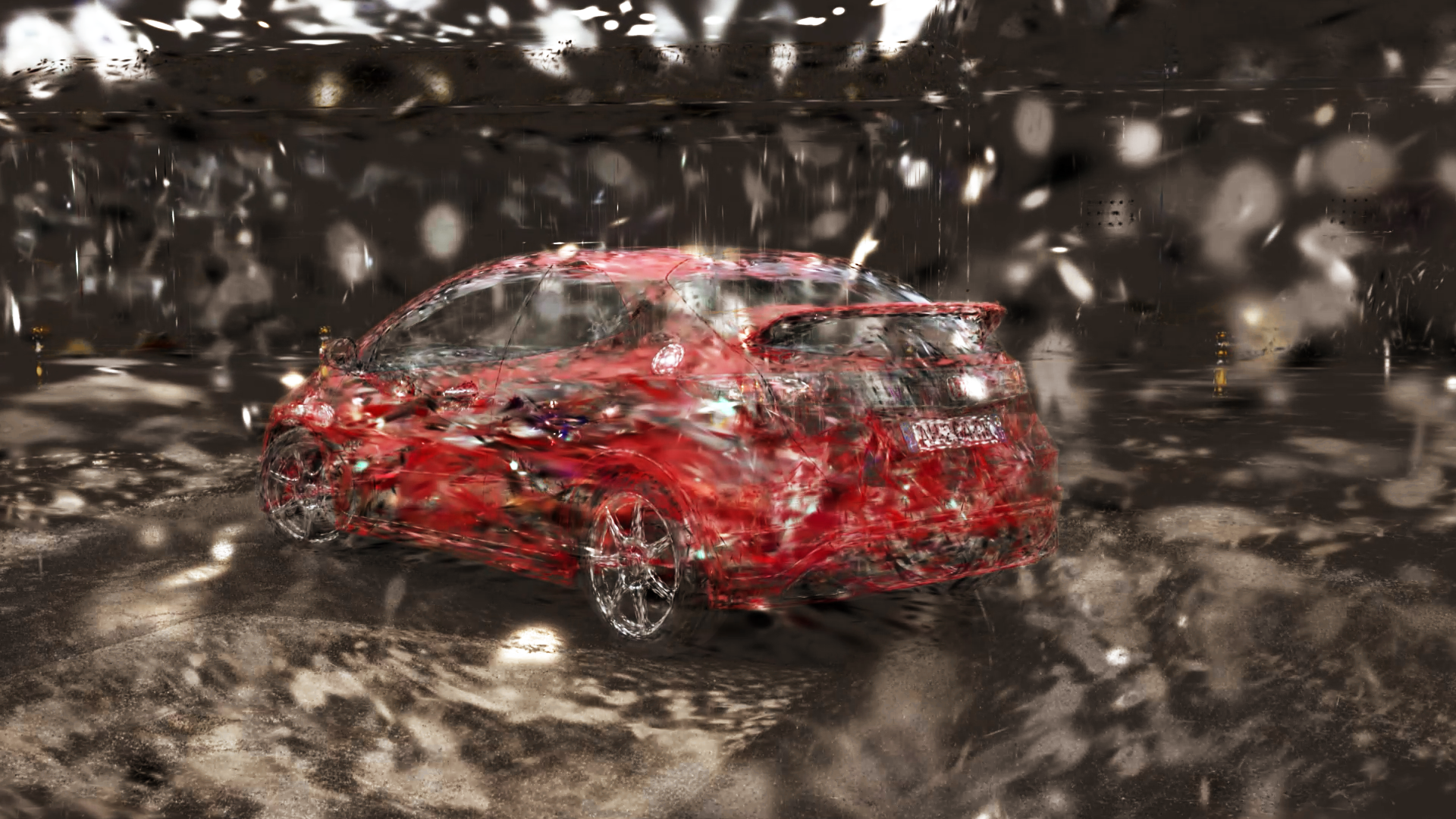The field of visual effects and 3D is constantly evolving. Among recent innovations, Gaussian Splatting is emerging as a revolutionary technique, transforming the way we create and represent 3D scenes.
Still little known to the general public, this method is already attracting growing interest in the VFX and virtual reality industries. But what is Gaussian Splatting, and why could it become a cornerstone of tomorrow's technologies? That's what we're going to find out in this article.
What is Gaussian Splatting?
Gaussian splatting is a new way of realistically recreating 3D images. Rather than using rigid shapes as in traditional methods such as photogrammetry, this technique projects thousands of tiny splashes of colour into space.
These 'blobs' blend together to form a fluid, detailed image, giving a very natural rendering. One of its major advantages is that it is faster to calculate and better adapted to complex environments, better capturing textures, light and the effects of reflection and transparency: something that is impossible with traditional photogrammetry.
Gaussian Splatting makes it easier to obtain ultra-realistic images with less effort and greater flexibility than with traditional methods such as photogrammetry.


To use Gaussian splatting, it is essential to understand the basic principles of 3D graphics processing.
Let's have a look at it straight away.
How does Gaussian Splatting work?
The process is based on projecting each data point as a cloud of Gaussian particles. This means that each splat is represented by a distribution that spreads out in space, offering a more fluid and realistic representation.
The algorithm generally follows several stages:
-
- Capture and extraction of points: from photos or 3D scans, data is extracted and organised in the form of a point cloud.
-
- Optimisation and filtering: each point is analysed and filtered to improve consistency and visual quality.
-
- Dynamic rendering: Gaussian splats are projected and merged to form a fluid, accurate image, with advanced management of depth and lighting effects.
This approach eliminates many of the artefacts present in traditional methods, in particular the problems of tessellation and contour management.
Gaussian splatting therefore stands out for its ability to handle complex scenes efficiently and its great flexibility. Thanks to its optimised algorithm, it enables real-time rendering without sacrificing visual quality. By integrating this technique into your 3D projects, you can not only gain in efficiency, but also offer an immersive, captivating and original visual experience.
Its advantages and disadvantages
Gaussian splatting, like any technique, offers many advantages, but also has certain disadvantages that should be carefully considered before incorporating it into your pipeline.
Advantages :
-
- High-quality photorealistic rendering thanks to its ability to process large, complex data sets,
-
- Ability to process large volumes of data without compromising visual quality,
-
- Direct editing possible (selecting, moving, deleting objects, etc.),
-
- Optimisation du calcul graphique, permettant un rendu rapide,
-
- Reflets de haute qualité conservés.
Disadvantages :
-
- Requires significant computing power for highly detailed scenes,
-
- Potential integration difficulties with traditional mesh-based rendering engines.
The future of Gaussian Splatting in industry
Gaussian Splatting opens up new perspectives in various areas of 3D, in particular:
-
- Visual effects and cinema: rapid integration of complex scenes without the need for heavy meshes.
-
- Video games: optimised real-time rendering with better detail management.
-
- Virtual and augmented reality: improved immersion thanks to more natural rendering.
-
- 3D scans and digital archiving: faithful capture and reproduction of objects and historic sites.
By incorporating Gaussian Splatting into your projects, you can not only improve your visual creations, but also gain in efficiency. This technique is an essential asset for anyone wishing to stand out in the field of 3D graphics.
At Tronatic Studio, we're actively exploring the possibilities offered by this technology. Integrating it into our projects enables us to optimise our workflows and deliver increasingly immersive visual experiences.
Le Gaussian Splatting constitue une véritable révolution dans la façon dont nous concevons et affichons des scènes 3D. En permettant un rendu fluide, précis et photoréaliste, tout en optimisant les performances, il s’impose progressivement comme une alternative aux méthodes traditionnelles.
While its widespread adoption is still under development, this technique promises to have a significant impact on the future of 3D graphics. Studios, developers and researchers will do well to keep a close eye on this development, which could well redefine the standards of 3D rendering in the future.